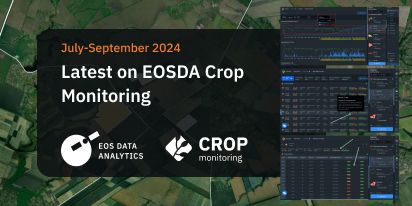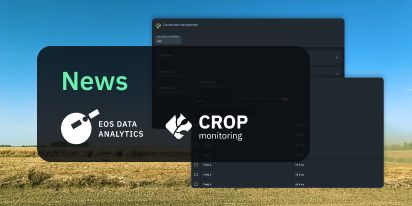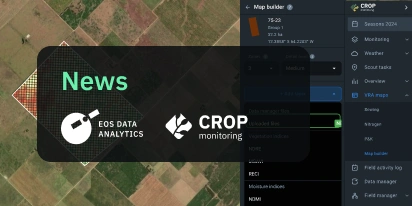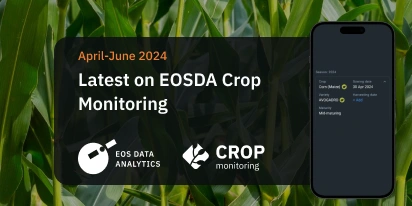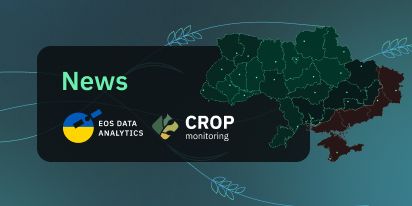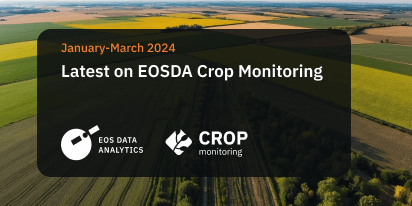How To Grow Cotton And Get Increased Yields
Cotton plant (Gossypium), is a genus of shrubs of the Malvaceae family. Most cotton types are widely bred for fiber and seeds. Fiber is used to produce fabrics and threads, while the seeds are used to produce oil and other products in food and other industries. In commercial cotton farming, it is usually an annual crop yielding once per growing season, but in the frost-free areas, the plant lives for several years, developing into a small shrub. Some cotton plantations in Peru produce yields annually for 3 years, and in northeastern Brazil – for up to 7 years.
There are almost 40 types of cotton, and they all come from warm temperate or tropical zones. However, the varieties of only 4 types are regularly bred.
Gossypium hirsutum
This cotton type accounts for more than 90% of world cotton production. It’s an elastic and strong high quality cotton. A semi-shrub is 1-1.5 m high, with a strong stem and developed lateral shoots, pubescent with one layer of hairs. The flowers are of medium size, without spots on the petals. The bracts are cordate and large. The fiber is long (28-32 mm) and thin.
Gossypium herbaceum
This cotton type grows in Pakistan, India, and parts of Africa. A semi-shrub has a thick main stem, reaching 1-1.5 m in height, and shoots pubescent with 2 tiers of hairs. The flowers are small, with a crimson-red spot on the petals. The bracts are wide-triangular. The capsule is round, small, usually four-leafed, slightly opening when ripening. The fiber is short (up to 25 mm) and thick.
Gossypium barbadense
This type of cotton is grown in Egypt, Sudan, the USA, Brazil, and Peru. A semi-shrub is 1-3 m high. The stem has many long, bare branches. The flowers are large, with a crimson-red spot on the petals. The bracts are triangular, and the fiber is 35-50 mm long and thin.
Gossypium arboreum
This cotton tree grows in Pakistan, Sri Lanka, and India. It is not widely cultivated because it usually produces short, poor quality fibers.
Cotton is currently grown in 75 countries around the globe. The biggest cotton producing countries are India, the United States, China, Brazil, and Pakistan.
India
India produces over 6 thousand tons of cotton per year. The reason for such a huge output is the favorable climate: moderate temperatures of 25-35 °C are best suited for growing cotton.
China
There are about 7 thousand textile companies in the country that annually produce cotton fabrics worth over $70 billion. Growing cotton requires moderate rainfall, and farmers in China use large amounts of pesticides and fertilizers to keep the plant free from pests.
The USA
The United States of America is the second largest cotton producer. It’s cotton producing states are Texas, Georgia, and Mississippi, as the climate is most favorable for the plant. Harvesting is done using machines that do not harm the plant.
In all of these countries you can use EOSDA Crop Monitoring to predict your cotton field productivity based on satellite data.
Cotton plant needs a long time without frost, heat, and sunshine. It prefers warm and humid climate. Cotton seeds will germinate slowly if the soil temperature is below 15 °C. In the active growth stage, the ideal air temperature is 21-37 °C. Temperatures above 37 °C are undesirable. However, the average cotton plant can withstand temperatures up to 43 °C for short periods without significant damage. For successful cotton growth, a small amount of rainfall is needed during ripening (in summer) and harvesting days (in fall).
You can track and analyze the weather desirable for cotton plants growing in EOSDA Crop Monitoring.
Cotton is a typical short-day crop that tolerates heat but does not withstand freezing temperatures. Seedlings die at frosts from – 1 to – 2 °С, and adult plants from – 3 to – 5 °С.
Soil requirements for cotton growing
Cotton is relatively drought tolerant. The plant requires moisture mostly during flowering and boll formation. Cotton can grow in almost all types of soils, as long as they are well-drained. However, deeply drained sandy loam soils with sufficient clay, organic matter, and moderate concentrations of nitrogen and phosphorus are considered the most suitable soils for high yields. The best yields are often obtained in loamy soils rich in calcium carbonate.
Here are the main stages of the cotton plant life cycle
1. Germination
This is the first of cotton growth stages. It occurs in hypocotyl with cotyledons growing and breaking through the soil surface. This phase is also known as the “crook stage”.
2. Leaf development
This stage starts when cotyledons unfold completely and lasts until 9 or more leaves unfold. At this stage, no side shoots are visible yet.
3. Formation of side shoots
At this stage of cotton plant life cycle, the first vegetative side shoot becomes visible
The stage lasts until at least 9 vegetative side shoots are visible.
4. Main stem elongation
This stage is manifested in the beginning of crop cover. It lasts until the canopy closure and 90% of plants meeting between rows.
5. Inflorescence emergence
This cotton plant stage starts when the first floral buds are visible. It lasts until the petals are visible. Yet, the floral buds are still closed.
6. Flowering
At this stage, the first cotton flower appears. The stage includes early bloom (5–6 blooms), mid bloom (11 and more blooms), and late bloom (the majority of flowers are faded).
7. Development of fruits and seeds
At this stage, cotton balls develop and attain their final size. The stage starts when about 10% of bolls have attained their final size, and ends when about 90% of cotton bolls have attained their final size.
8. Ripening of fruits and seeds
At this stage, cotton bolls start opening on the fruiting branches. The stage starts when about 10% of bolls have opened, and ends when about 90% of cotton bolls are open.
9. Senescence
This is the last of cotton plant growth stages. It starts with the leaves discolouring or falling, and ends when the above ground parts of the plant die.
Land preparation for cotton planting depends on the predecessor. If after corn harvesting there are stems that are infected with wilt, they must be removed by the roots and taken out of the field. On uninfected fields, the stems are crushed and plowed. If cotton is sown after alfalfa, before plowing, the soil is scuffed to a depth of 5 – 6 cm to cut the roots and prevent their further growing.
To get a high cotton yield, use alfalfa in crop rotation. It lowers the groundwater level, improves soil structure, and promotes the accumulation of humus in it, preparing the land for farming. Also, thanks to it, the water and air permeability of the soil increase.
One of the main steps in land preparation for cotton planting is soil plowing. Fall plowing is usually carried out in August or September to a depth of 40 cm with two-tier plows. At the same time, weed destruction and herbicides treatment are performed. If the soils are saline, they are washed after fall plowing and loosened with plows and cultivators.
It is crucial to plant cotton at the right time. It is sown when the soil temperature is stable at 12 – 14 °C. Since cotton is a plant that doesn’t tolerate freezing temperatures, when cold weather returns in spring, it has to be resown. The best temperature for the development of cotton is 25 °C, and 26 – 30 °C when flowering.
Use EOSDA Crop Monitoring to determine the best time for cotton planting based on satellite data.
Another factor to consider when planting cotton is the method of sowing. Ridge planting helps to increase cotton yields. When planting cotton, 3-4 inter-row cultivations are carried out in two directions. Herbicides and mulching are used to help kill weeds.
Meadow soils are one of the best for cotton planting. Cotton is relatively salt-tolerant – the plants can withstand a concentration of salts at which other cultivated plants die. But, to obtain a high yield on saline soils, it is necessary to carry out leaching irrigation. For cotton, fields with close groundwater level are less favored. It is better if the groundwater lies deeper than 3 m from the soil surface.
Before cotton planting, it’s crucial to choose and prepare the seeds. Cotton seeds used for sowing need to have a germination rate of at least 85% and purity of at least 98%. Before sowing, the seeds are subjected to air-heat treatment and treated with granosan or formalin to prevent root rot.
Cotton seeds preparation also includes delinting with hydrochloric and sulfuric acid, sorting by weight and volume, and calibration. The use of these techniques helps to increase the yields of cotton. Treatment of seeds with organophosphorus preparations also protects seeds and seedlings from agricultural pests.
When sowing, the seed rate depends on the width of the row spacing, the seeding scheme, and soil condition during the sowing period. It should not exceed 25 – 30 kg / ha for bare seeds and 60 – 70 kg / ha for pubescent seeds. Depending on the cotton variety and field’s layout, the density can be increased to 150 – 170 thousand plants per 1 hectare.
Use EOSDA Crop Monitoring to correctly identify the most productive field zones for cotton planting.
Cotton requires a large amount of fertilizers. To get 1t of cotton, you will need approximately 45 – 50 kg of nitrogen, 40 – 50 kg of potassium, and 12 – 17 kg of phosphorus. Pre-sowing superphosphate application is also very effective in the cotton fertilization process. Nitrogen fertilization is carried out from the leaves development stage through the flowering stage. Potash fertilizers are used during the flowering stage, and phosphorus is applied in the period of flowering and fruit development.
Make sure to apply the right amount of corn fertilizers. The lack of nitrogen results in small leaves and yellow-green coloration. The excess of nitrogen helps to enhance vegetative growth but delays ripening. The lack of phosphorus results in poor development of the root system, red veins appearing on the leaves, delay in-bolls development, and the decrease in crop quality. If the plant is lacking potassium, brown spots appear on the leaves. Besides, it increases the possibility of wilt disease, while the quality of the crop decreases.
The norms of nitrogen, phosphorus, and potassium depend on the type of soil, location of the cotton field, crop rotation, and the planned harvest.
To apply fertilizers when and where needed, pay attention to the fields’s productivity zones in EOSDA Crop Monitoring.
To increase moisture in the arable layer and remove harmful salts from the soil, pre-sowing leaching irrigation is carried out. If the land is highly susceptible to salinity, leaching irrigation is carried out annually in October – December. At this time, the groundwater is at its deepest. Vegetation irrigation promotes plant growth and development. The lack or excess of moisture has a detrimental effect on the harvest, so it’s crucial to comply with the norms and timing of corn watering. An effective way of cotton irrigation is with flexible pipeline irrigation hoses and sprinkler irrigation.
Cotton water consumption
For the development of roots and aerial parts of the plant, 1 – 2 cotton irrigations are carried out. The first one is done before flowering (when there are 3-5 leaves), and the second one is done in 20-25 days after the first watering. During flowering and fruit formation, the plant’s need for water increases. When cotton is ripening, the irrigation rate should not exceed 600-700 cubic meters per hectare. It provides adequate soil moisture level before defoliation. Watering is carried out no later than 5-7 days before defoliation.
When watering cotton, rigid and semi-rigid irrigation pipelines, flexible hoses and siphons are used. When using sprinklers, water consumption is reduced by 2 – 3 times.
Here are the most common cotton pests and the ways to protect the crop from them:
Aphis gossypii
These cotton bugs reduce the quality of a plant due to fiber contamination with sticky sugary secretions. The fiber eventually turns black.
Protection measures:
- Weed control
- Spatial isolation of cotton fields from vegetables and melons
- Seed treatment
Cotton bollworm
This cotton pest damages the leaves of the plant, later moving to young bolls. Caterpillars bite into the bolls, feeding on seeds until they harden.
Protection measures:
- Weed control
- Deep fall plowing
- Inter-row soil treatments and winter irrigation
- Seed treatment
Beet armyworm
Young caterpillars eat the leaves of the plant, while older ones gnaw large holes in them. The caterpillars also damage cotton flowers and buds.
Protection measures:
- Weed control
- Fall plowing and irrigation
- Seed treatment
This cotton pest causes leaves discoloration, spotting, and marbling.
Protection measures:
- Fall plowing
- Destruction of plant residues and weeds
- Seed treatment
Here are the most common cotton diseases and the ways to protect the crop from them:
Cotton root rot
This cotton disease is detected mainly on older plants. It causes sudden wilting of the entire plant. The leaves of the affected plants do not fall off, but often turn yellowish-brown. The stems dry out and break easily. In the lower part of the stem and on the roots, mainly in the upper part, gray, dry spots appear.
Protection measures:
- Correct crop rotation
- Soil moisture control before sowing
- Leveling of the field’s surface
- High seeds quality
- Seed treatment
Cotton leaf curl
The sign of this cotton plant disease is the curvature of the stems in both the upper and lower part. Sick bushes become wide-canopied in shape with drooping branches and leaves.
Protection measures:
- Selection of relatively resistant cotton varieties
- Early sowing
- Dense planting
- Application of phosphorus fertilizers
Fusarium wilt
A sign of this cotton disease is the appearance of yellowish rounded or angular spots on the leaves. Only a small green part of the leaf is preserved in the form of small narrow stripes along the veins. The spots turn brown and dry out until the formation of necrosis.
Protection measures:
- Proper crop rotation (corn, sorghum, rapeseed, mustard, wheat, barley, rye)
- Urea (carbamide) treatment
Powdery mildew
A whitish grey powdery appears on the underside of the leaves. Then the disease intensifies, becomes clearly visible and covers the upper side of the leaf with silvery white fungal growth. Affected leaves curl, turn yellow, dry out, and fall off.
Protection measures:
- Destruction of all post-harvest plant residues
- Careful fall plowing
- Weed control
Pay attention to plant health via EOSDA Crop Monitoring with the help of vegetation indices.
In 5.5 – 6.5 months after sowing, cotton is usually ready for harvesting. Since the ripening in cotton is uneven, and the bolls open gradually over 1 – 1.5 months, it is necessary to accelerate the ripening of the bolls and artificially cause the leaves to fall. For this, defoliation is carried out. Another reason defoliation (removal of leaves) is very common in cotton harvesting is that the leaves may carry pathogenic bacteria and fungi, and also interfere with the work of cotton harvesters.
When most plants have 1 – 2 or 2 – 3 bolls open, they are treated with defoliants. This is usually done early in the morning or in the evening. Defoliation accelerates the maturation of cotton bolls. When the opening of the bolls reaches 50-60%, cotton is harvested with special machines. They are usually large tractors that separate fibers from plants and collect bolls. Immediately after cotton harvesting, it’s crucial to destroy the remaining plants and plow the field.
Use EOSDA Crop Monitoring to determine the best time for cotton harvesting.
The top 5 countries with the highest cotton yields are Australia, Israel, China, Brazil, and Turkey. The highest cotton yield per acre is 2,056 pounds harvested in Australia.
Keep in mind that what is harvested from the field is called raw cotton, which is not a product for sale. It has to go through a cotton gin first. It is a machine that quickly and easily separates cotton fibers from seeds and other plant’s parts. For instance, 0.5 kg of raw cotton contains approximately 32-33% cotton fiber, 52-54% cotton seeds, and about 15% stones, leaves, and dirt. However, the numbers may vary.
The price of cotton in 2020 is $1.51 per kg. Here are the main factors affecting the cotton price on the global market:
- Worldwide consumption
- Weather conditions in the growing regions
- The level of competition in crops between cotton and corn
- The balance of the world cotton market in previous seasons (deficit or surplus)
- The size of the world’s reserves as well as the quality of supplies
- Changes in the volume of import / export of cotton
- Economical reasons: dollar price, currency speculation
Here are the things to consider for improving your cotton fields productivity and increase yields:
Cotton type selection
Choose the type of cotton with already proven fiber quality and yield potential. Consider the types’s resistance to diseases and pests for achieving high yields.
Seed treatment
Carry out fungicide, insecticide, and nematicide seed treatment before planting to protect your crop and enhance yields.
Soil testing
Test the soil to establish its pH level and nutrients content to fertilize your field accordingly. Besides, ensure sufficient soil moisture and soil temperature before cotton planting.
Pest management
Plant cotton under optimum weather conditions to limit the risk of diseases. Rotate herbicides, fungicides and insecticides to increase crop resistance to pests.
Irrigation
Ensure adequate moisture level, and carry out crop watering according to the cotton growing region. Avoid excess irrigation to prevent the plant from delayed maturity. Perform irrigation at the right stage of cotton development.
Plant growth monitoring
Keep track of your cotton crop growth, square size and fruit retention to increase yield and enhance fiber quality through treating the plant according to its need at every growth stage.
Harvest management
Carry out defoliation as soon as possible to achieve the right balance of cotton yield and quality. Check seed maturity at the upper cotton bolls. Defoliate when the seed coats are black, and harvest when the cotton crop is defoliated and most bolls open.
Use EOSDA Crop Monitoring to manage your cotton field remotely and react to any changes in vegetation in a timely manner.
